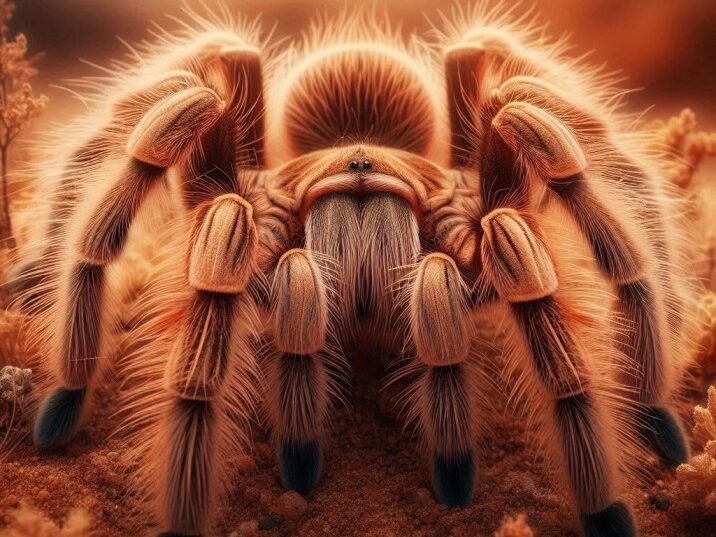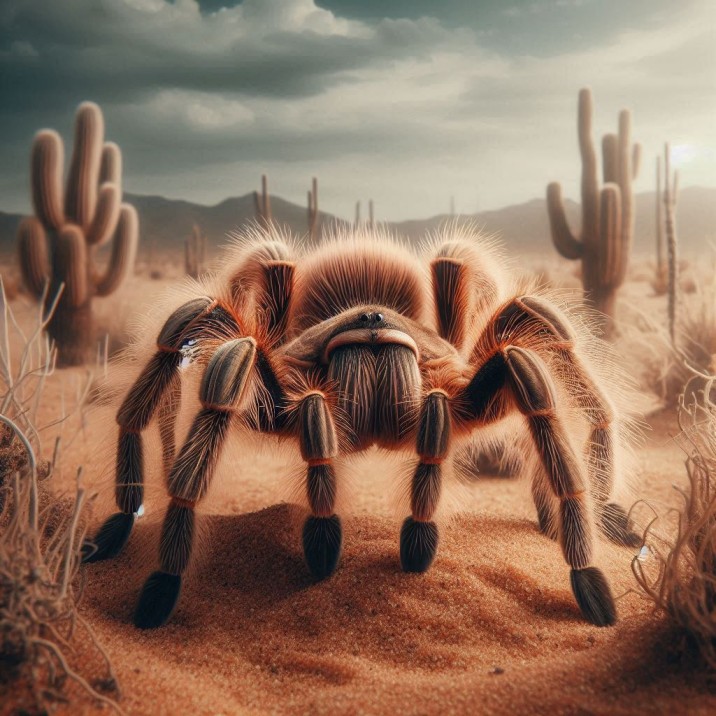Introduction
Table of Contents
The Desert Blonde Tarantula (Aphonopelma chalcodes) is one of the most intriguing spiders in the United States. Known for its gentle nature and distinctive appearance, this tarantula is a common sight in the deserts of Arizona and surrounding areas. Desert Blonde Tarantulas are often admired for their light, almost blonde coloration, which helps them blend into their sandy surroundings. But there’s more to this arachnid than just its looks. In this article, we will dive deep into the life of the Desert Blonde Tarantula, exploring its habitat, behavior, diet, and much more. This article is crafted to be easy to read for everyone, including students in grade 5, and aims to provide a comprehensive understanding of this remarkable spider.

Table of Information
| Feature | Details |
|---|---|
| Scientific Name | Aphonopelma chalcodes |
| Common Name | Desert Blonde Tarantula |
| Size | 3 to 5 inches in body length, with a leg span of up to 6 inches |
| Coloration | Light tan or blonde body with darker legs |
| Lifespan | Females: 25+ years, Males: 5-10 years |
| Habitat | Deserts and arid regions of the Southwestern United States |
| Diet | Insects, small rodents, and other invertebrates |
| Temperament | Docile, shy, and not aggressive towards humans |
| Conservation Status | Not currently endangered, common in the wild |
Desert Blonde Tarantula
Habitat and Distribution
The Desert Blonde Tarantula is predominantly found in the arid landscapes of the Southwestern United States, particularly in Arizona. These spiders are well adapted to the harsh desert environment, where temperatures can soar during the day and plummet at night. They spend most of their lives in burrows, which they dig themselves or take over from other animals. These burrows provide shelter from extreme temperatures and predators.
The Ideal Burrow
A Desert Blonde Tarantula’s burrow is a carefully constructed home. It is usually found in areas with sandy or loose soil, which makes digging easier. The burrow can be several inches deep, with the entrance often covered by silk to keep out unwanted guests. Inside the burrow, the tarantula finds a cool and humid environment, perfect for avoiding the scorching desert sun.
Physical Characteristics
The Desert Blonde Tarantula is easily recognized by its light tan or blonde body, which is particularly striking against the darker color of its legs. This coloration not only gives the spider its name but also helps it blend into the desert landscape. Adult females can reach up to 5 inches in body length, with a leg span of up to 6 inches, making them one of the larger tarantula species in the United States.
Size and Growth
Tarantulas grow by molting, a process where they shed their exoskeleton to grow a new, larger one. Young tarantulas, or spiderlings, molt frequently as they grow, while adults may only molt once a year. Desert Blonde Tarantulas are slow-growing, with females taking up to 10 years to reach full maturity.
Behavior and Temperament
Despite their intimidating appearance, Desert Blonde Tarantulas are known for their docile and shy nature. They are not aggressive and will usually retreat to their burrow when threatened. If cornered, they may raise their front legs and display their fangs as a warning, but they rarely bite. This makes them a popular choice for pet owners who are looking for a large, manageable spider.
Defensive Mechanisms
When feeling threatened, a Desert Blonde Tarantula may kick off tiny, irritating hairs from its abdomen, known as urticating hairs. These hairs can cause itching and discomfort if they come into contact with skin, but they are harmless and only used as a defense mechanism.
Diet and Hunting
The Desert Blonde Tarantula is a carnivorous predator, primarily feeding on insects, such as crickets, beetles, and grasshoppers. However, they are opportunistic feeders and will also prey on small rodents, lizards, and even other spiders if the opportunity arises.
Hunting Strategy
Unlike spiders that spin webs to catch their prey, Desert Blonde Tarantulas are ambush predators. They rely on their stealth and patience, often waiting near the entrance of their burrow for unsuspecting prey to wander by. When prey is within reach, the tarantula pounces, injecting venom to immobilize it before consuming the meal.
Lifespan and Reproduction
One of the most remarkable aspects of the Desert Blonde Tarantula is its lifespan. Female tarantulas can live for over 25 years, while males have a much shorter lifespan, typically living only 5 to 10 years. This difference in lifespan is largely due to the reproductive habits of the species.
Mating Rituals
Mating for Desert Blonde Tarantulas usually occurs during the summer months when males leave their burrows in search of females. The male performs a unique courtship dance to attract a mate, tapping his legs to signal his presence. If the female is receptive, she will allow the male to approach. After mating, the male often dies shortly after, while the female returns to her burrow to lay eggs. She may lay hundreds of eggs, which she guards fiercely until they hatch.
Interaction with Humans
Desert Blonde Tarantulas are generally not a threat to humans. Their bite is venomous but not dangerous to people, often compared to a bee sting in terms of pain and effects. These spiders are more likely to flee than fight when encountered by humans.
As Pets
Due to their calm demeanor, Desert Blonde Tarantulas are popular in the pet trade. They are easy to care for, requiring minimal space and attention. However, it’s important to remember that these are long-lived creatures, especially the females, so owning one is a long-term commitment.
Conservation Status
Currently, the Desert Blonde Tarantula is not considered endangered. They are common in their natural habitat and face few significant threats. However, habitat destruction and climate change could impact their populations in the future. Conservation efforts to protect desert ecosystems indirectly benefit this species by preserving their natural environment.
Conclusion
The Desert Blonde Tarantula is a fascinating creature that thrives in the harsh desert environment. With its gentle nature, unique appearance, and impressive lifespan, it’s no wonder that this tarantula captivates both enthusiasts and casual observers alike. Whether encountered in the wild or kept as a pet, the Desert Blonde Tarantula continues to intrigue and amaze those who take the time to learn about it.
FAQs
- Are Desert Blonde Tarantulas dangerous to humans?
- No, Desert Blonde Tarantulas are not dangerous to humans. Their bite is comparable to a bee sting and is not harmful.
- How long do Desert Blonde Tarantulas live?
- Female Desert Blonde Tarantulas can live over 25 years, while males typically live 5 to 10 years.
- What do Desert Blonde Tarantulas eat?
- They primarily eat insects like crickets and beetles, but they can also eat small rodents and lizards.
- Where can you find Desert Blonde Tarantulas?
- They are commonly found in the deserts of the Southwestern United States, particularly in Arizona.
- Can Desert Blonde Tarantulas be kept as pets?
- Yes, they are popular pets due to their calm nature and ease of care.

